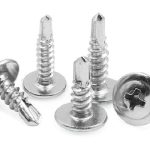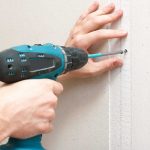Drywall Screw & Drywall Installation
1. Features of Drywall Screw
Compared with other screws, drywall screws have deeper threads that prevent them from falling out of the drywall.
Besides, drywall screws can also be used along with plastic anchors that distribute the weight of the hung object evenly over the surface.
2. Types of Drywall Screw
As we mentioned before, the thread is essential for drywall screws. Drywall screws can be classified according to the pitch of the screw.
The coarse threaded screw can be driven into faster for it has fewer threads. Besides, its threads are more coarse and make it hold tighter.
On the other hand, the finely threaded screw may take longer time to insert. However, the self-drilling point makes it easier to pass through the material.
Generally, the coarse threaded drywall screw is used to attach the drywall to wood studs. And the finely threaded drywall screws are used to attach the drywall with metal studs.
3. Types of Drywall
Drywall is a modern building material. It’s a large panel with a gypsum core between two layers of paper. It’s widely used on the walls and ceilings in residential applications. There’s a great variety of drywall in terms of its thickness or sheet sizes, etc.
4. How to choose drywall screw
Normally, the drywall screws are often with diameters of #6, #8, and #10. In terms of its length, it depends on the thickness of the gypsum board.
The most common type is self-tapping screw with length of 1 1/4’’, which is used to secure 1/2’’ gypsum board. For ceiling construction, the 5/8” drywall is often used with drywall screws with length of 1 5/8”.





